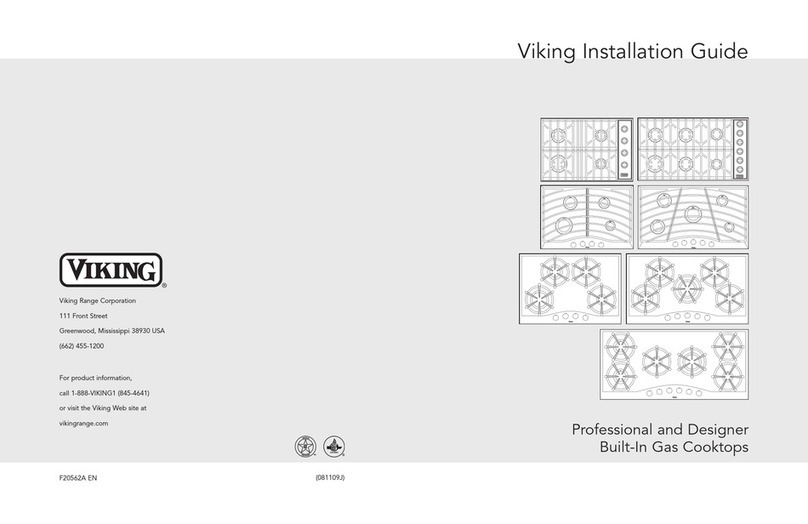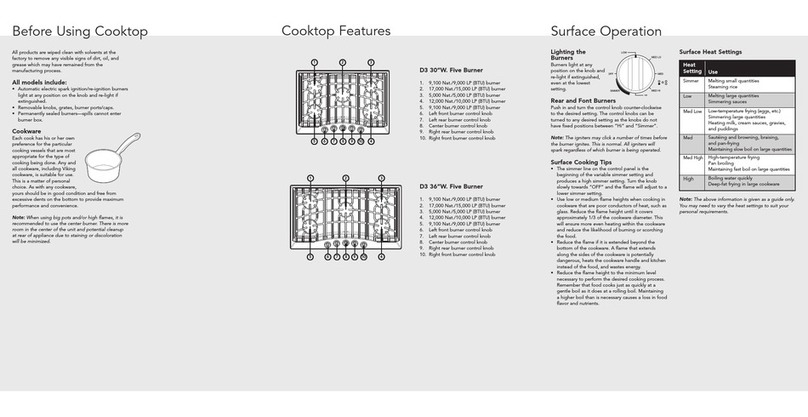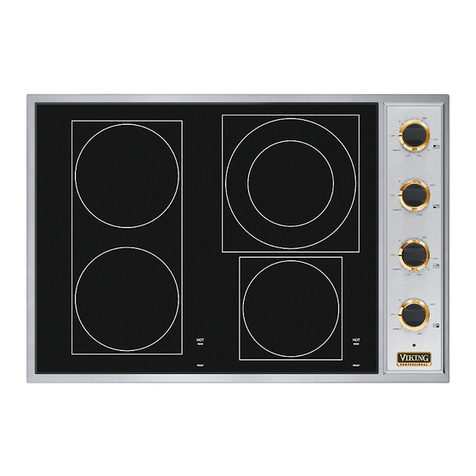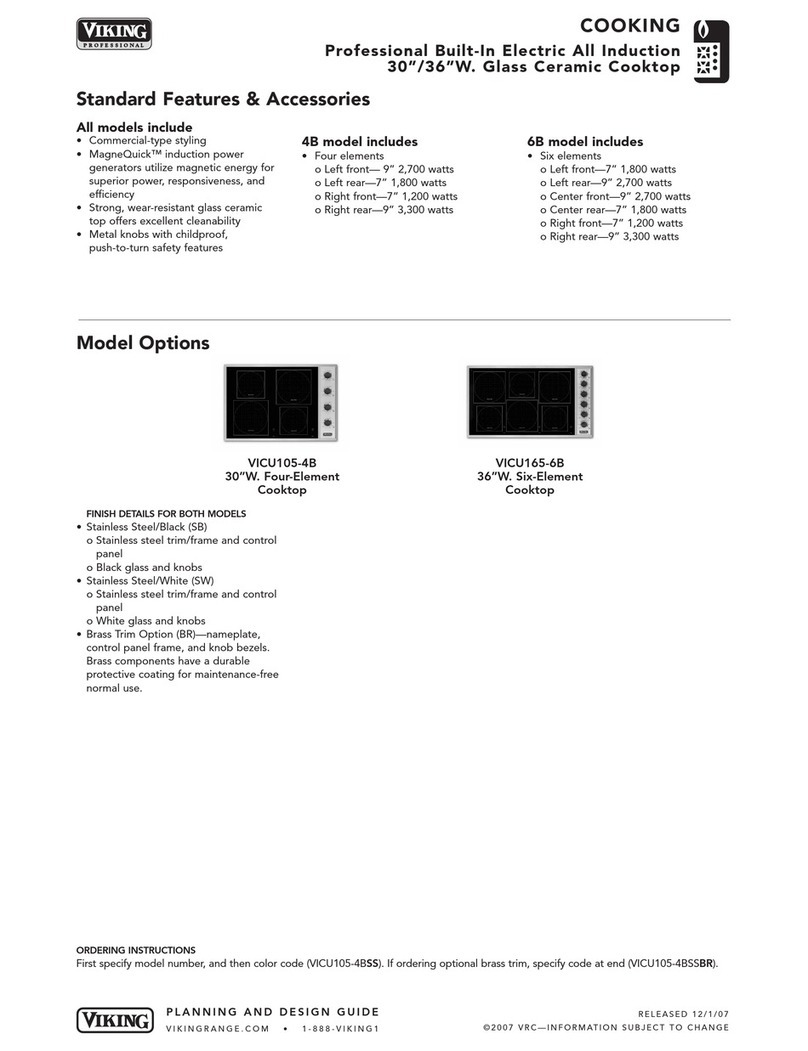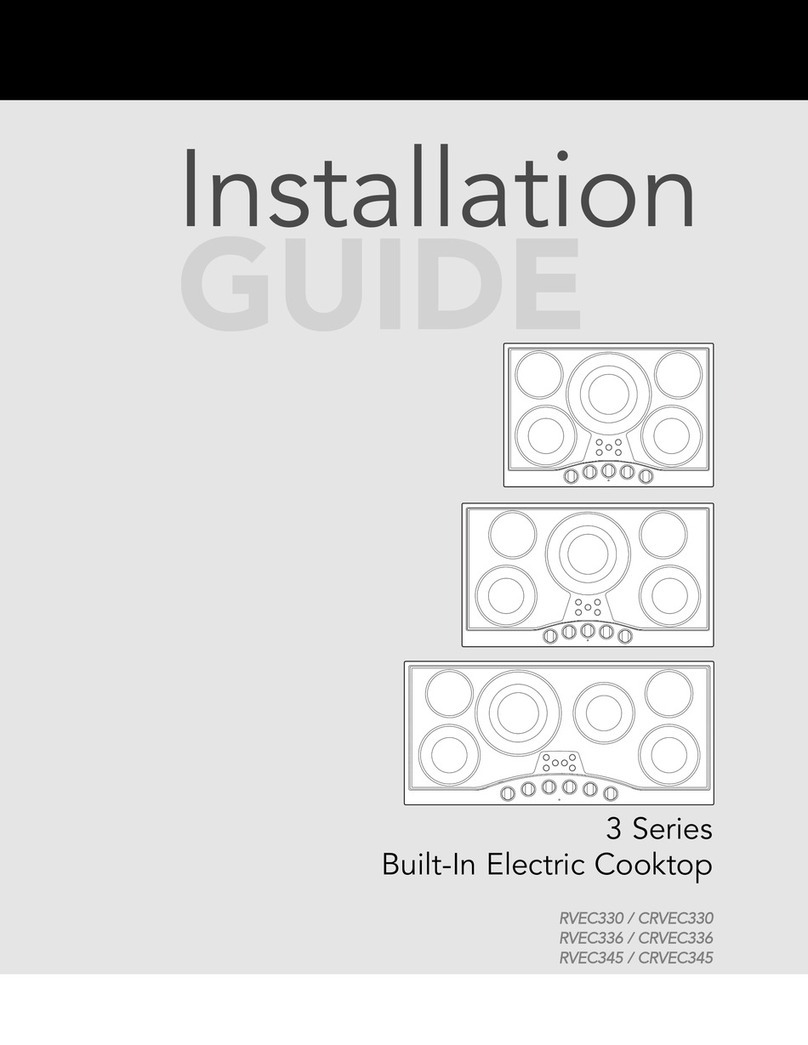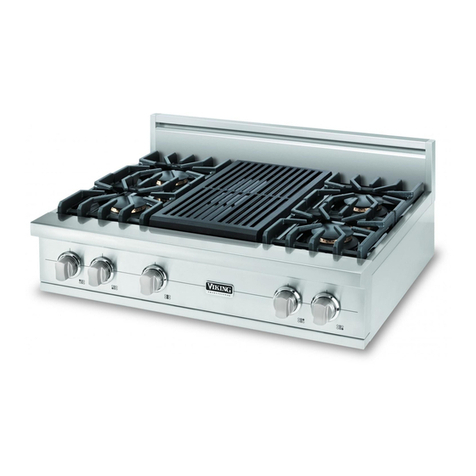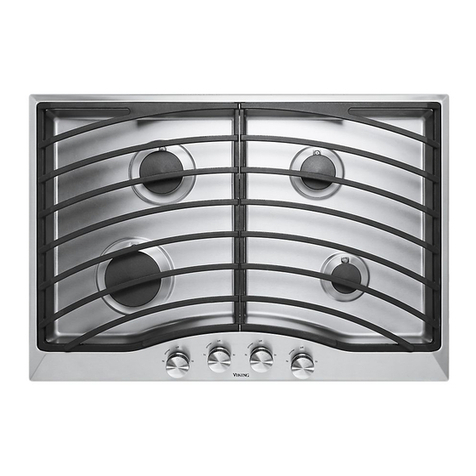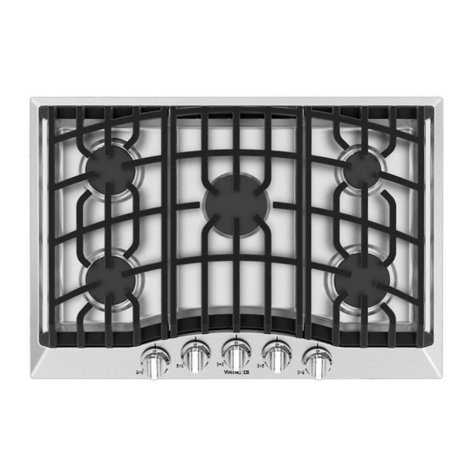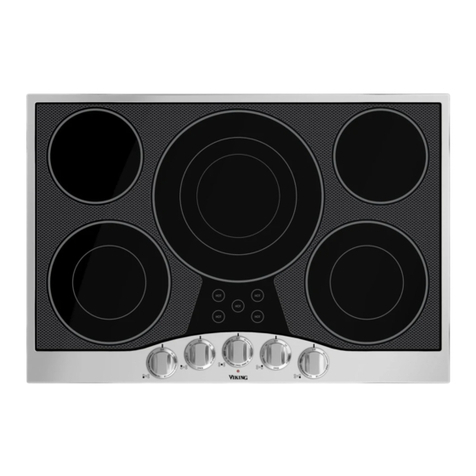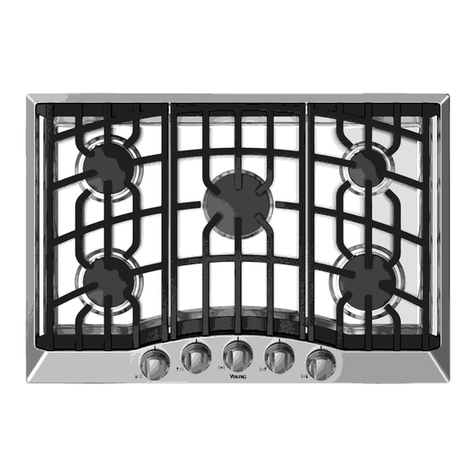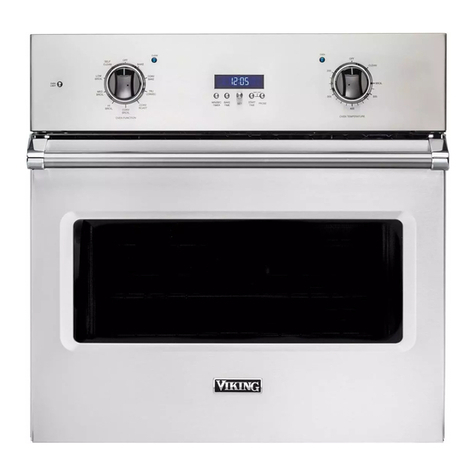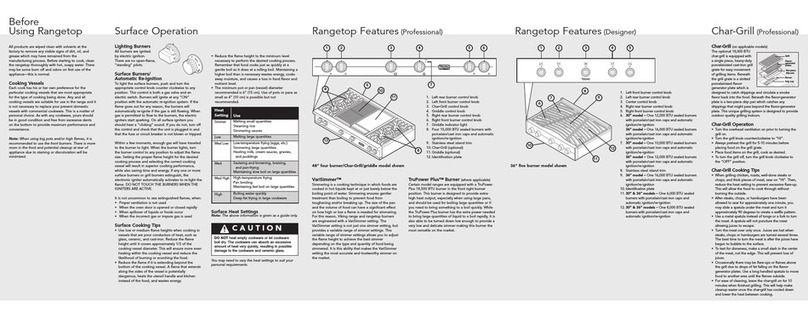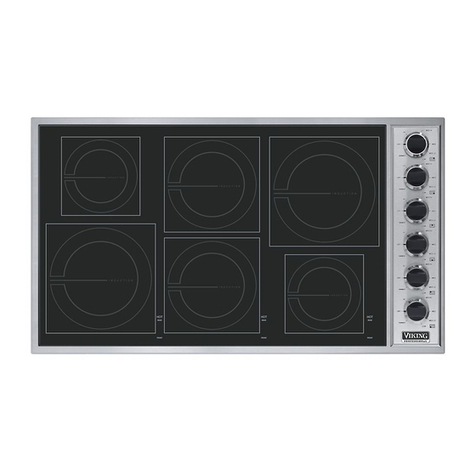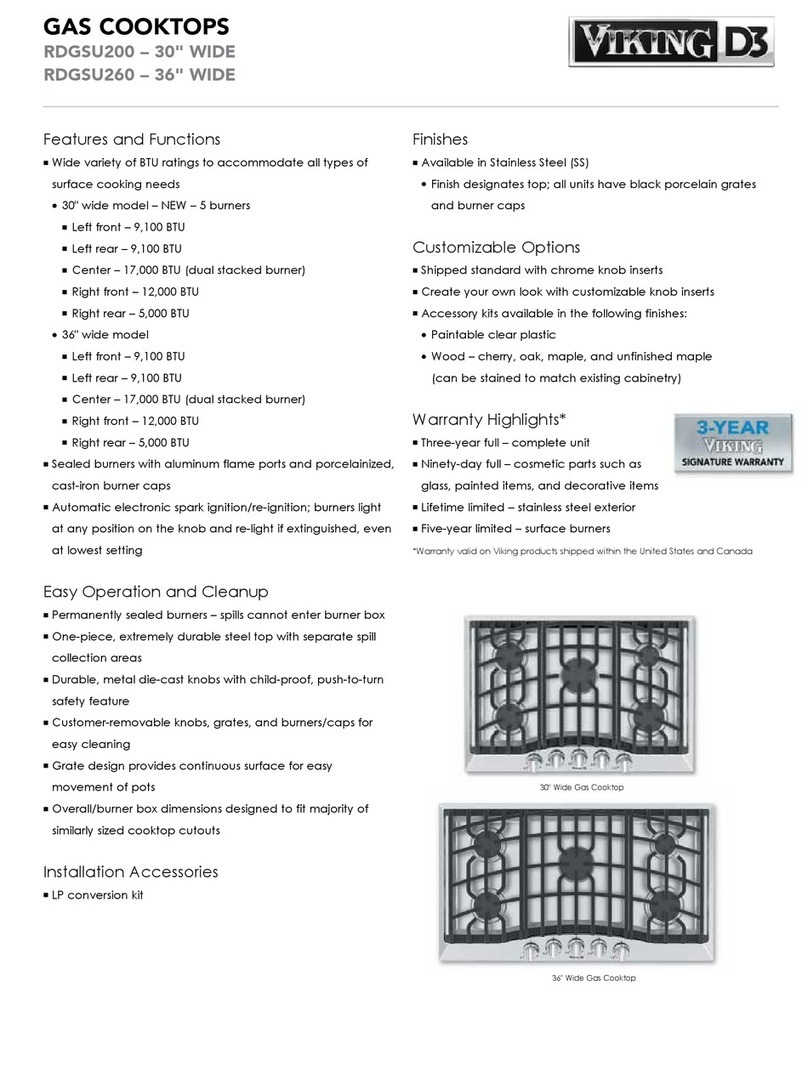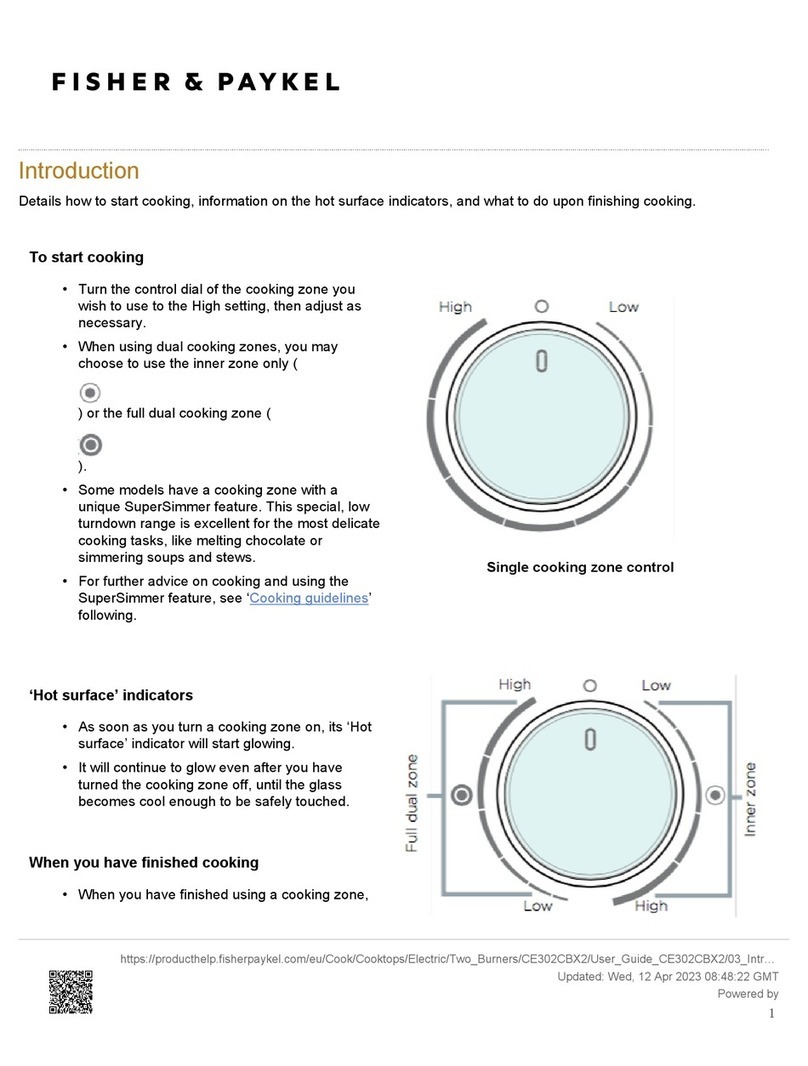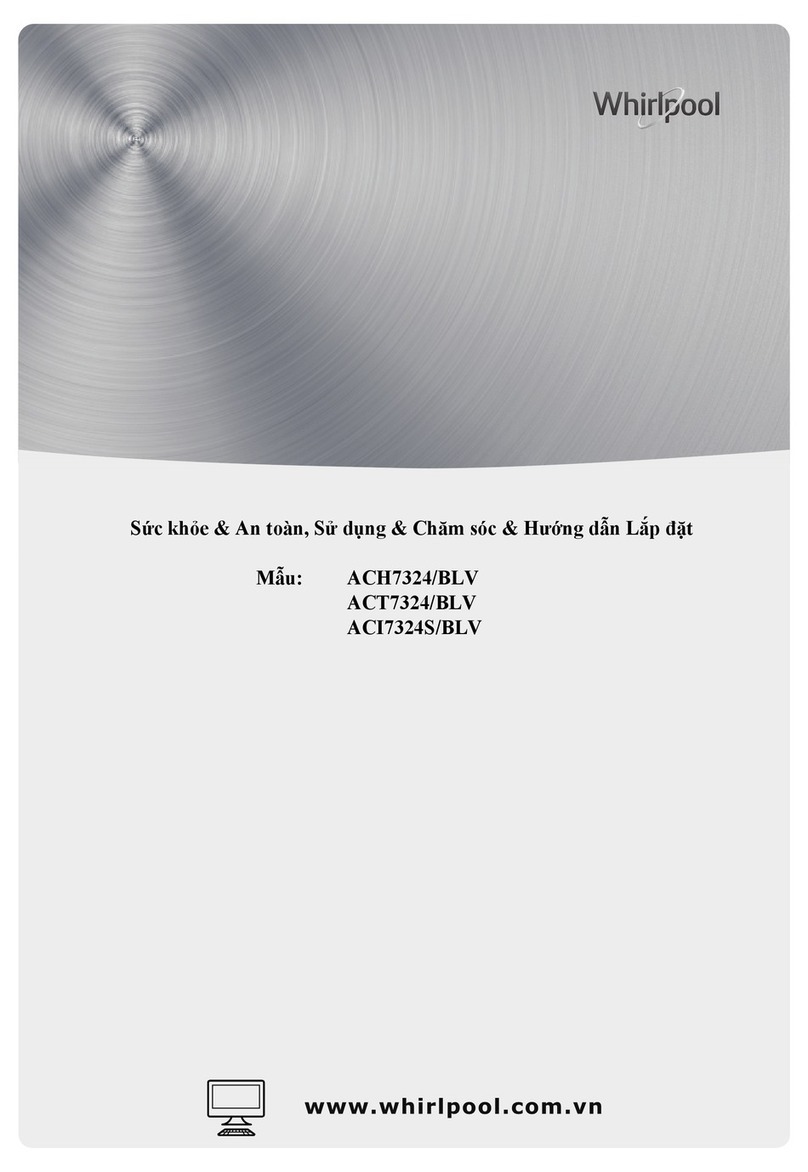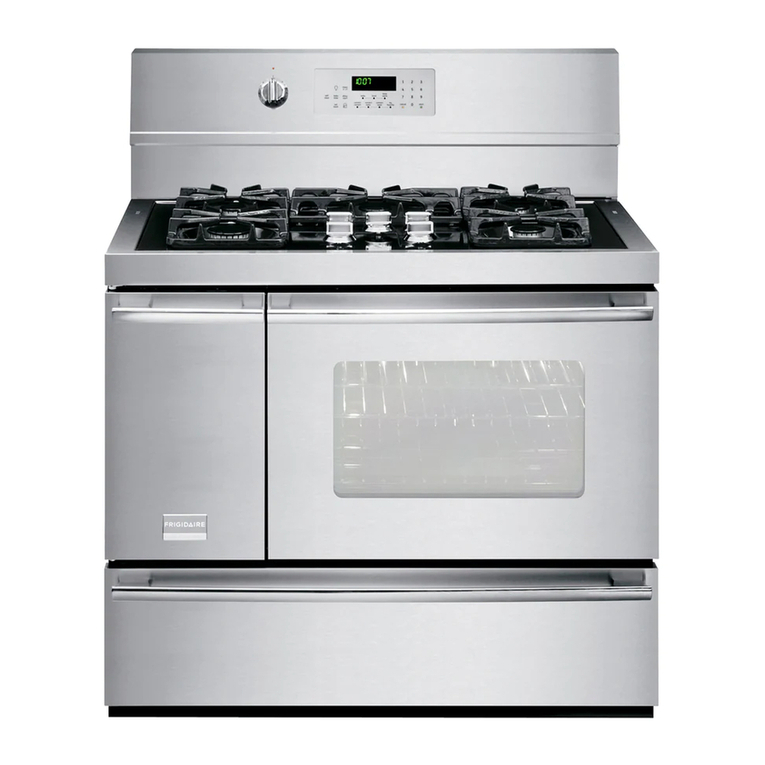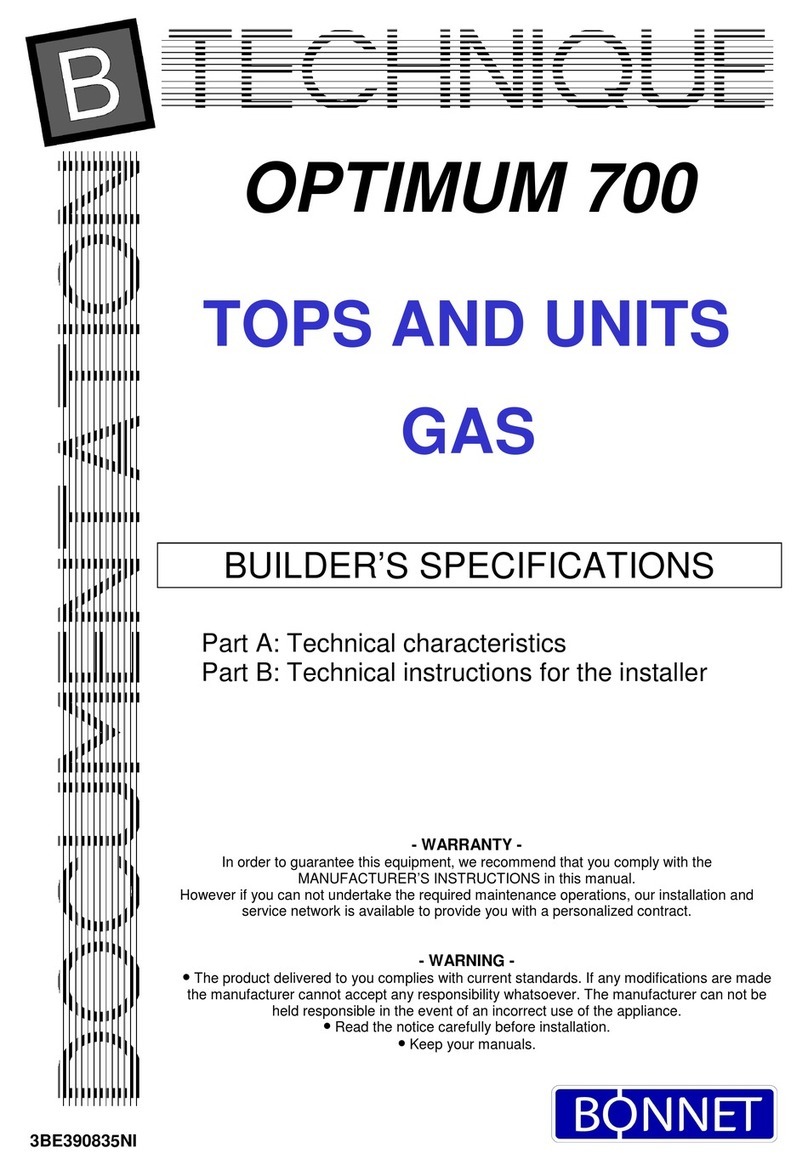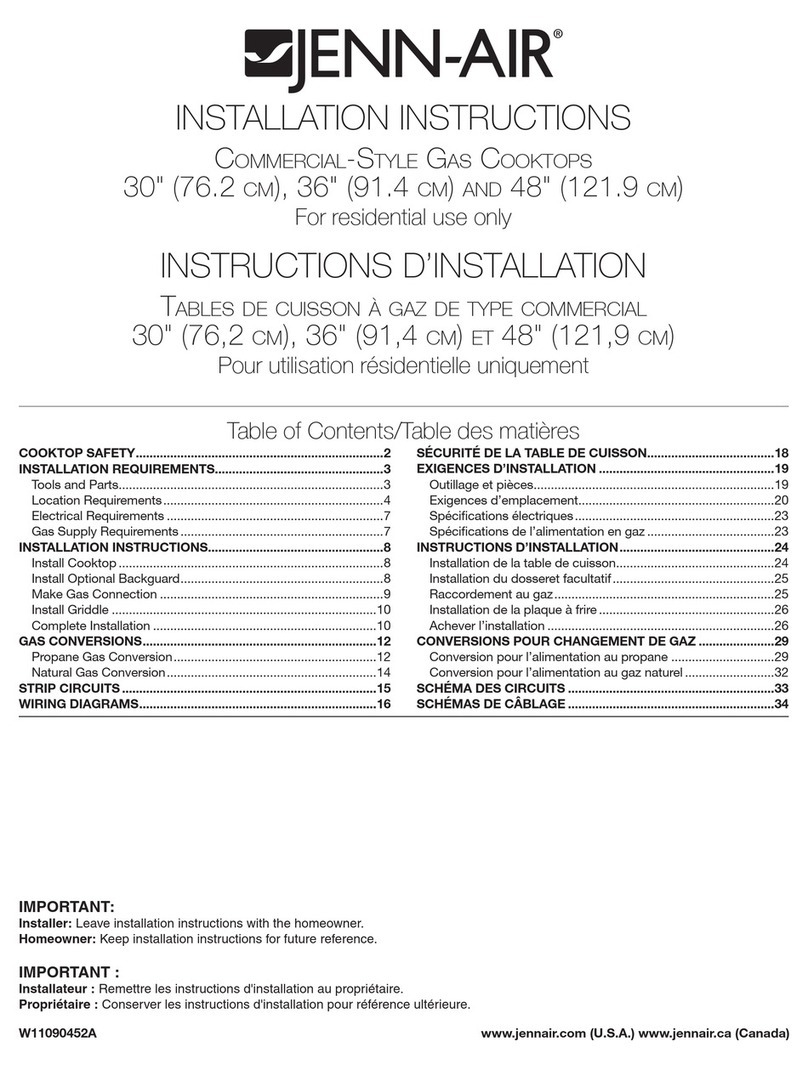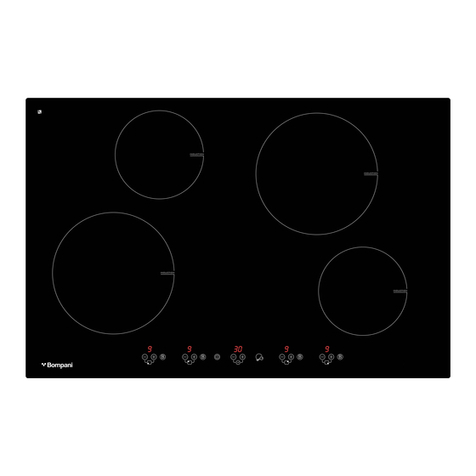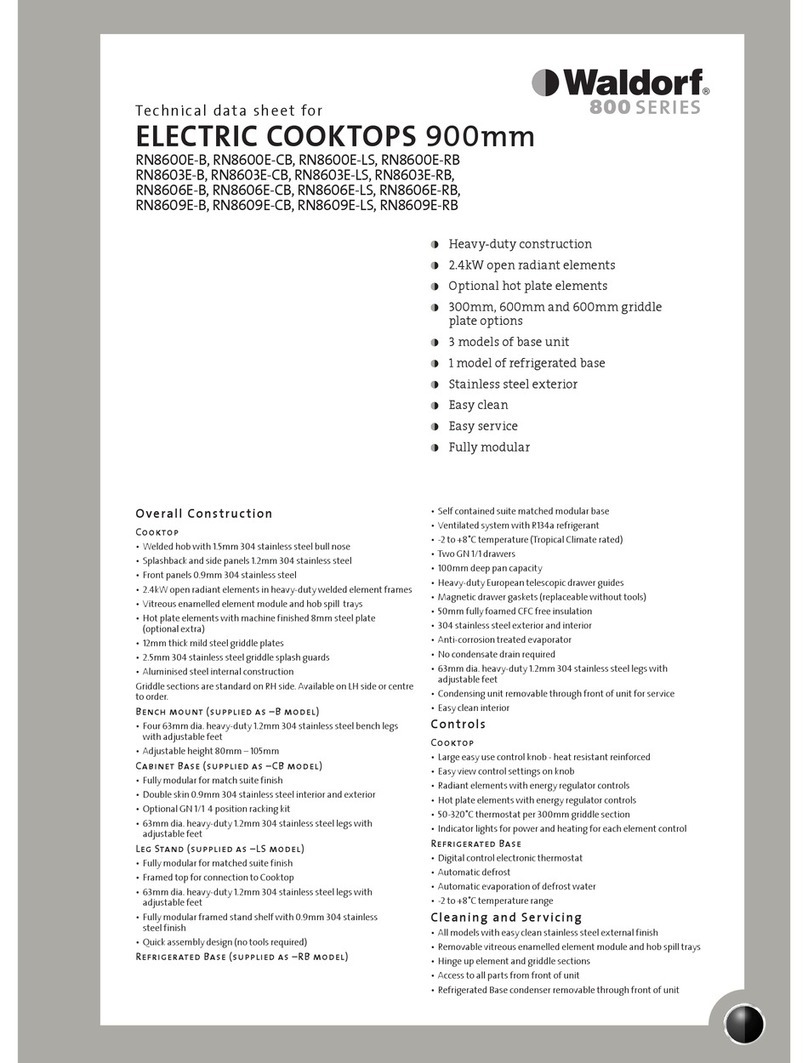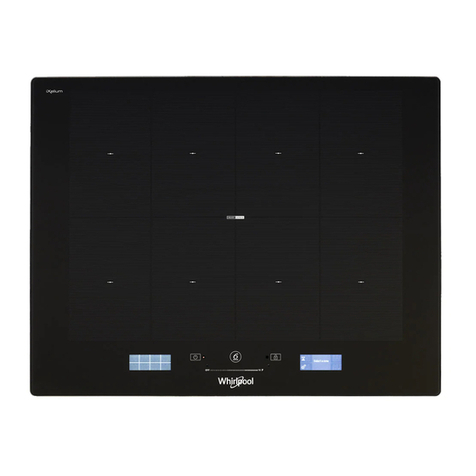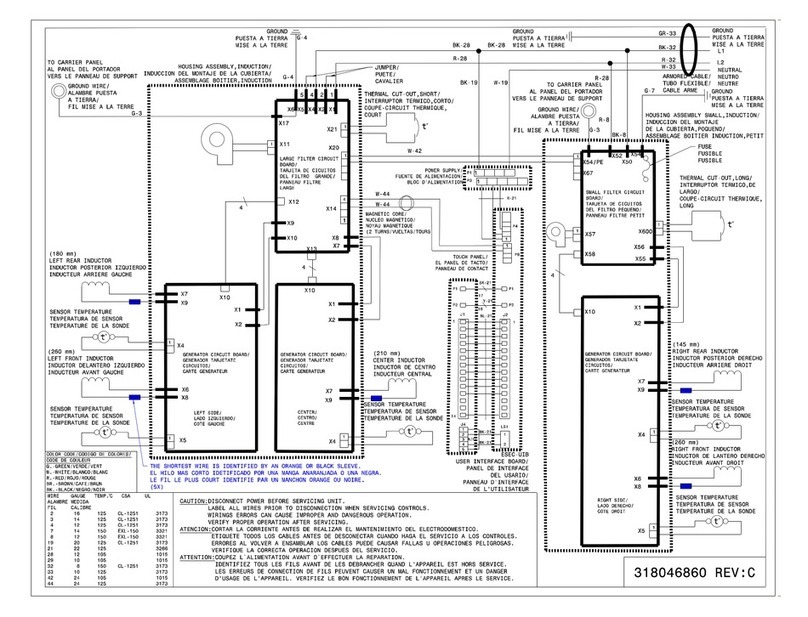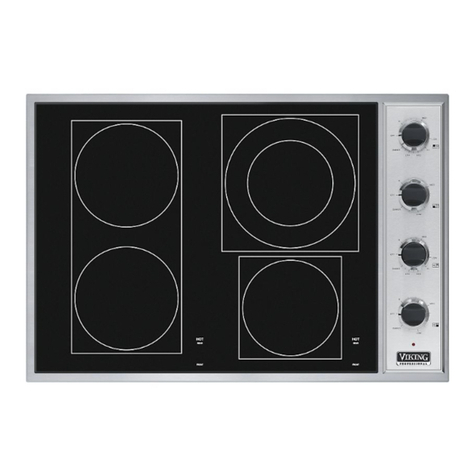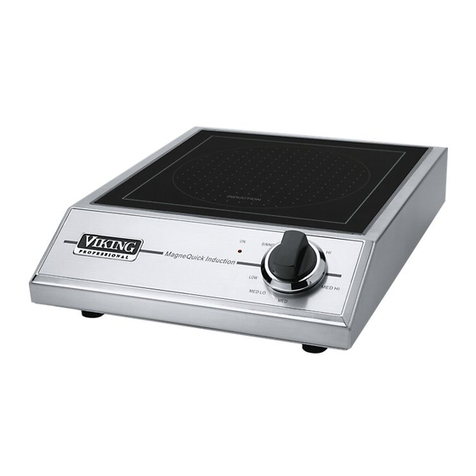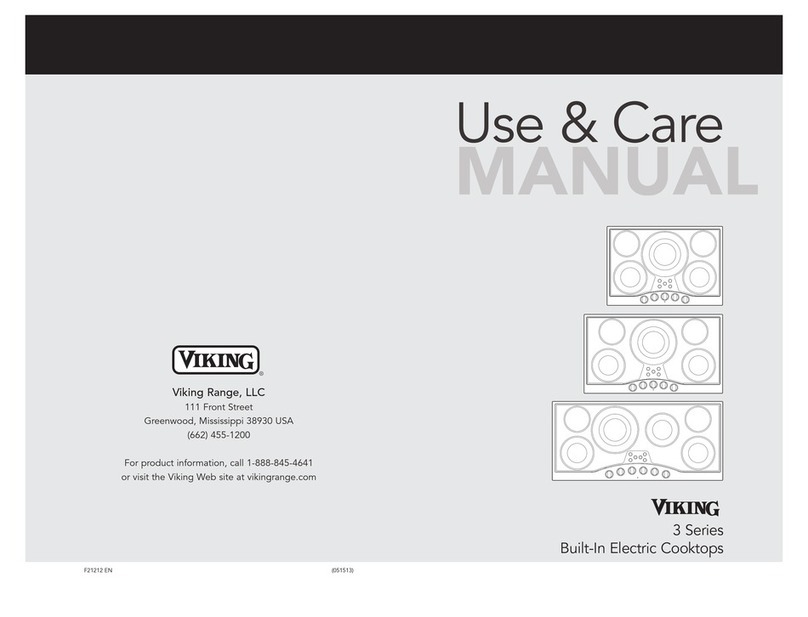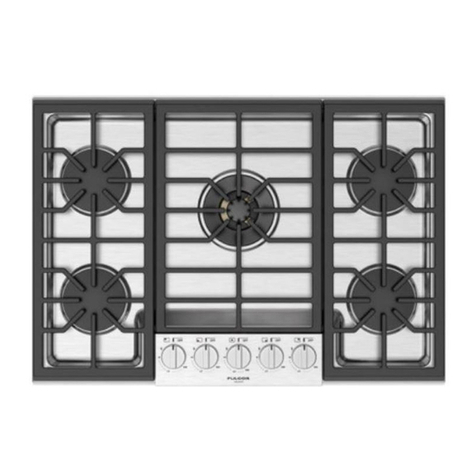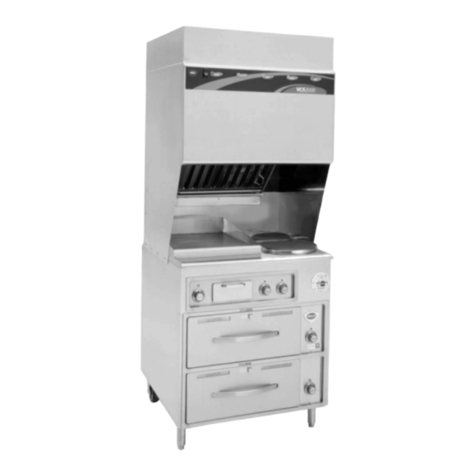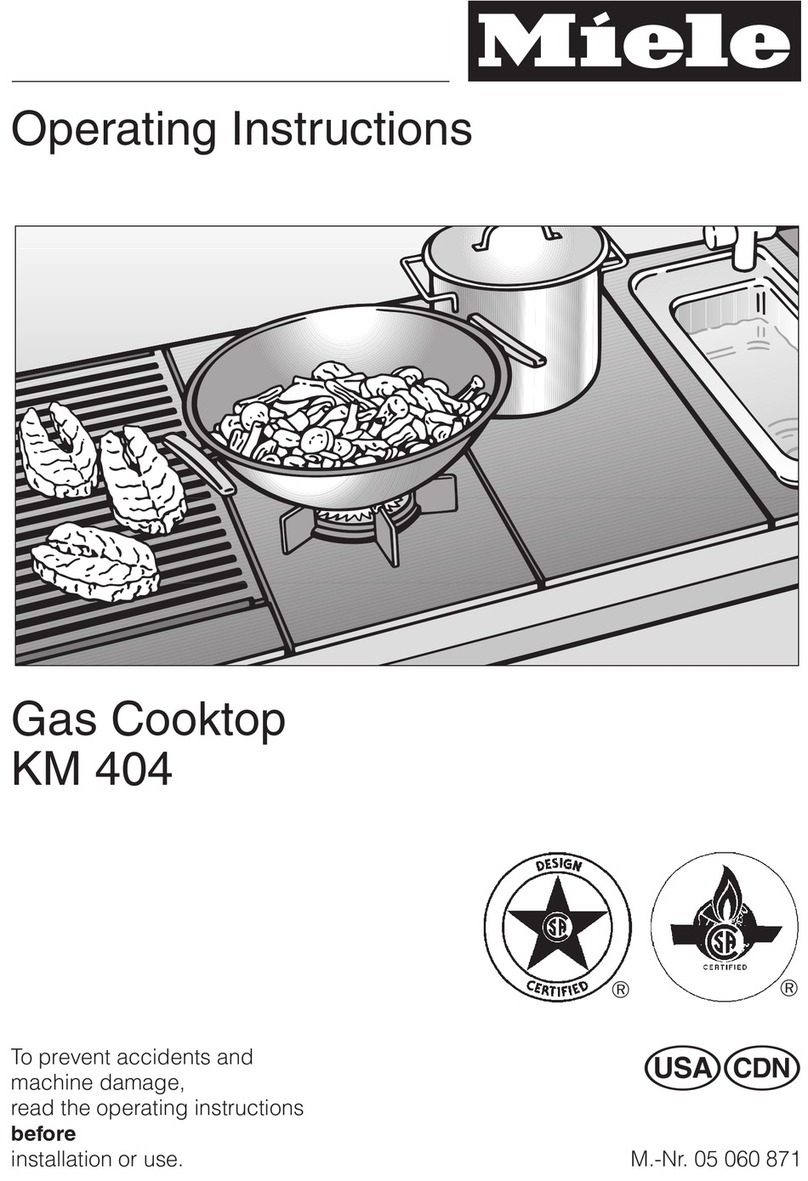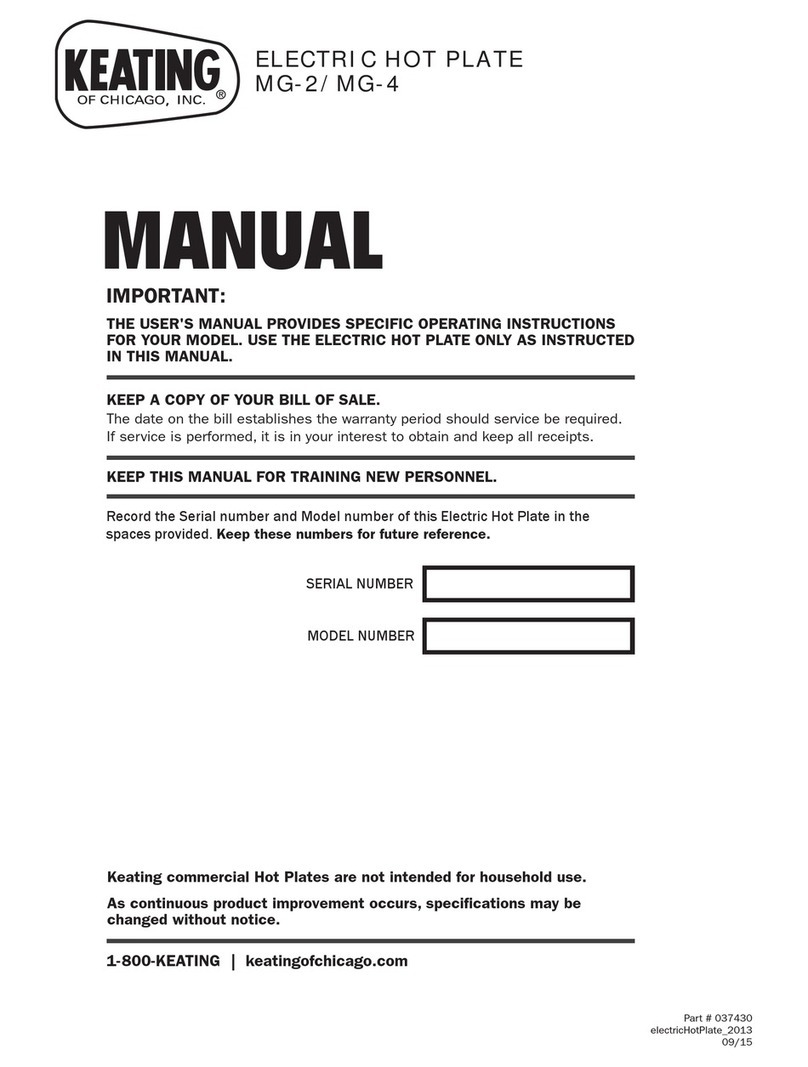7
Warnings
Getting Started
6
Warnings
Getting Started
Child Safety
• To eliminate the hazard of reaching over hot surface elements cabinet
storage should not be provided directly above a unit. If storage is provided
it should be limited to items which are used infrequently and which are safely
stored in an area subjected to heat from an appliance. Temperatures may be
unsafe for some items such as volatile liquids cleaners or aerosol sprays.
• NEVER leave children alone or unsupervised near the appliance when it is in
use or is still hot.
• NEVER allow children to sit or stand on any part of the appliance as they
could be injured or burned.
•DO NOT store items of interest to children over the unit. Children climbing
to reach items could be seriously injured.
• Children must be taught that the appliance and utensils in it can be hot.
Let hot utensils cool in a safe place out of reach of small children. Children
should be taught that an appliance is not a toy. Children should not be
allowed to play with controls or other parts of the appliance.
Cooking Safety
•ALWAYS place a pan on a surface element before turning it on. Be sure you
know which knob controls which surface element. Make sure the correct
element is turned on. When cooking is completed turn element off before
removing pan.
• NEVER leave a surface cooking operation unattended especially
when using a high heat setting or when deep fat frying. Boilovers cause
smoking and greasy spillovers may ignite. Clean up greasy spills as soon as
possible. DO NOT use high heat for extended cooking operations.
• NEVER heat an unopened container on the surface element. Pressure
build-up may cause container to burst resulting in serious personal injury
or damage to the appliance.
• Use dry sturdy pot-holders. Damp pot-holders may cause burns from steam.
Dishtowels or other substitutes should NEVER be used as potholders
because they can trail across hot surface elements and ignite or get caught
on appliance parts.
•ALWAYS let quantities of hot fat used for deep fat frying cool before
attempting to move or handle.
•DO NOT let cooking grease or other flammable materials accumulate in or
near the appliance hood or vent fan. Clean hood frequently to prevent
grease from accumulating on hood or filter. When flaming foods under the
hood
TURN THE FAN OFF.
•NEVER wear garments made of flammable material or loose fitting or long-
sleeved apparel while cooking. Clothing may ignite or catch utensil handles.
Cooking Safety (cont.)
•PREPARED FOOD WARNING:
Follow food manufacturer's instructions. If a
plastic frozen food container and/or its cover distorts warps or is otherwise
damaged during cooking immediately discard the food and its container.
The food could be contaminated
.
• If you are “flaming” liquor or other spirits under an exhaust TURN THE
FAN OFF. The draft could cause the flames to spread out of control.
Cookware Safety
• Use pans with flat bottoms and handles that are easily grasped and stay
cool. Avoid using unstable warped easily tipped or loose-handled pans.
Also avoid using pans especially small pans with heavy handles as they
could be unstable and easily tip. Pans that are heavy to move when filled
with food may also be hazardous.
• Be sure cookware is large enough to properly contain food and avoid
boilovers. Pan size is particularly important in deep fat frying. Be sure pan
will accommodate the volume of food that is to be added as well as the
bubble action of fat.
• To minimize burns ignition of flammable materials and spillage due to
unintentional contact with the utensil DO NOT extend handles over
adjacent burners. ALWAYS turn pan handles toward the side or back of the
appliance not out into the room where they are easily hit or reached by
small children.
•NEVER let a pan boil dry as this could damage the utensil and the
appliance.
• Only certain types of glass glass/ceramic ceramic or glazed cookware are
suitable for the rangetop surface without breaking due to the sudden
change in temperature. Follow manufacturer's instructions when using glass.
• This appliance has been tested for safe performance using conventional
cookware. DO NOT use any devices or accessories that are not specifically
recommended in this guide. DO NOT use eyelid covers for the surface
units. The use of devices or accessories that are not expressly
recommended in this manual can create serious safety hazards result in
performance problems and reduce the life of the components of the
appliance.

